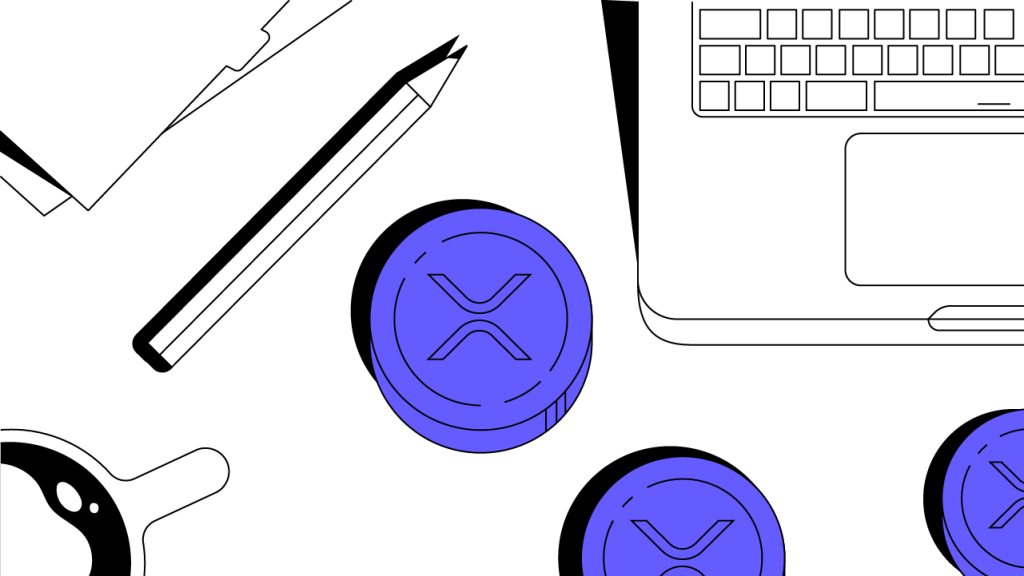Contents
The Top XRP Use Cases
1. Fast and Affordable Cross-Border Payments
2. On-Demand Liquidity (ODL) for Financial Institutions
3. XRP Ledger for Tokenization and DeFi
4. Micropayments and Streaming Revenue
5. NFTs on the XRP Ledger
6. CBDCs and Cross-Network Interoperability
7. Payments and Merchant Adoption
8. XRP Tip Bots and Social Micro-Payments
9. XRP in Gaming and Virtual Asset Economies
10. Investment and Trading
The Bottom Line
FAQs
What Is XRP Used For? Top 10 Use Cases
Discover what XRP is used for, from cross-border payments to NFTs and DeFi. Explore top real-world use cases of this fast, low-fee crypto.

Summary
Key Takeaways:
1. XRP powers fast and low-cost international money transfers.
2. The XRP Ledger is used in tokenization, DeFi, and NFTs.
3. Micropayments and streaming services are emerging use cases for XRP. XRP’s infrastructure is also being explored for CBDCs and interoperability.
From banking infrastructure to NFTs, XRP is quietly powering some of the most practical innovations in blockchain today.
The Top XRP Use Cases
launched in 2012 by Ripple Labs, available on XRP Ledger (XRPL), a blockchain optimized to be fast, scalable, and efficient in terms of transaction costs.
XRP is designed as a currency and a technique for bettering the global financial infrastructure, especially concerning cross-border transactions and liquidity needs.
Contrary to most other cryptocurrencies, which are centered on decentralization at the individual level, XRP was oriented toward enterprise requirements. It allows you to settle in seconds, has a consensus mechanism rather than mining, and allows thousands of transactions per second.
XRP is known to be a fast, efficient, and enterprise-level blockchain solution. So, how is XRP being utilized nowadays? Contrary to most crypto assets, which are mainly used as pure speculative investments, XRP was created to be functional in the real world, especially in the context of the global financial system.
You may be an interested investor or simply trying out blockchain functionality, but below are the best examples of the XRP and the in practical use cases.
1. Fast and Affordable Cross-Border Payments
XRP was built for speed, and its role in cross-border transactions is its most prominent use case:
RippleNet uses XRP as a bridge asset to facilitate instant currency conversion.
Transactions that normally take two to five business days via SWIFT can be completed in seconds using XRP.
With fees typically less than one cent, XRP dramatically reduces remittance costs.
This functionality makes XRP particularly useful for institutions and remittance providers aiming to cut costs and settlement times.
2. On-Demand Liquidity (ODL) for Financial Institutions
XRP supports Ripple's On-Demand Liquidity platform, designed to solve a common banking challenge: pre-funding accounts worldwide.
ODL uses XRP to enable real-time settlement between fiat currencies. It eliminates the need to hold local currency in destination countries.
This frees up working capital for banks and improves liquidity management. Dozens of financial institutions have adopted ODL, especially in regions where currency exchange can be slow or expensive.
3. XRP Ledger for Tokenization and DeFi
The XRP Ledger (XRPL) allows developers to issue custom tokens and access decentralized finance tools.
Token Creation and Asset Issuance
XRPL supports token creation for stablecoins, digital assets, and real-world assets like real estate. It allows users to manage tokens natively without smart contracts.
Built-In Functions for Finance
XRPL features built-in token management, escrow, and payment channels. These tools enable low-cost, secure, decentralized finance without sacrificing speed.
Expanding Capabilities
XRPL sidechains and hooks further expand its DeFi potential. Developers can deploy apps with custom logic while benefiting from XRPL's efficiency.
This opens the door for more scalable, low-cost DeFi applications, which can issue custom tokens and access decentralized finance tools.
4. Micropayments and Streaming Revenue
Thanks to its low fees and fast confirmation times, XRP is ideal for microtransactions and pay-per-use services.
Users can send tiny fractions of XRP in real-time without worrying about high gas fees. Projects like Coil have tested XRP for streaming-based web monetization, where users pay creators by the second. This model could reshape how content creators and developers are compensated online.
5. NFTs on the XRP Ledger
NFT support was introduced to the XRP Ledger through the XLS-20 standard.
Eco-Friendly Minting
XRP’s eco-friendly consensus mechanism makes it a more sustainable choice for NFTs than energy-heavy alternatives.
Speed and Scale
The ledger can handle thousands of NFTs per second, maintaining low transaction costs. Creators can mint, buy, sell, and trade NFTs directly on XRPL with minimal fees.
This allows artists and developers to explore NFTs without worrying about network congestion or high minting fees. To the XRP Ledger through the XLS-20 standard.
6. CBDCs and Cross-Network Interoperability
XRP is also being explored as an infrastructure layer for central bank digital currencies (CBDCs).
Ripple is working with multiple central banks on CBDC pilots. XRPL's fast settlement and built-in compliance features make it well-suited for regulated digital assets. XRP could be a neutral bridge for interoperability between CBDCs issued on different platforms.
This positions XRP as a helpful component in the future of global digital finance.
7. Payments and Merchant Adoption
XRP isn't just for institutions and developers — it can also be used for everyday payments in some settings.
Some online merchants and physical retailers accept XRP via crypto payment gateways like BitPay. Its speed and minimal transaction fees make it a practical option for fast, low-cost purchases.
XRP's growing acceptance as a medium of exchange highlights its use as a digital currency, not just a bridge asset.
8. XRP Tip Bots and Social Micro-Payments
The XRP community has developed tools that bring tipping and social payments to life on major platforms.
XRP TipBot allows users to send small amounts of XRP through social media channels like Twitter and Reddit. This makes it easy to reward content creators or express appreciation without high fees.
Though some platforms have changed access policies, the concept showcases XRP’s strength in microtransactions.
9. XRP in Gaming and Virtual Asset Economies
Game developers and virtual platforms are exploring XRP for asset transfer, player rewards, and in-game currency.
Instant In-Game Transactions
XRP’s speed and scalability are ideal for gaming, where instant processing is key to a smooth experience. Players can make rapid purchases or transfers without waiting for confirmation delays.
Web3 Integration and Digital Economies
XRP is considered a value layer for Web3 games and virtual metaverse environments. Its low transaction cost supports micro-payments, item trading, and real-time interactions across decentralized platforms.
Its use in gaming ecosystems indicates the increasing fit of XRP in several other digital economies beyond the financial environment. They are considering XRP as an asset transfer mechanism, a token of reward to players, and a form of currency within games.
The speed and scalability of XRP make it suitable for gaming applications where the speed of processing is a significant factor in the success of a gaming adventure. Players can utilize XRP to purchase skins and collectables or exchange value between virtual worlds.
XRP can also be an effective technology in blockchain gaming due to its inclusion in Web3 ecosystems.
10. Investment and Trading
XRP is perhaps the most liquid cryptocurrency on the list of the largest exchanges.
Traders speculate on it, using it as a portfolio diversifier or hedging in volatile markets.
Due to the existence of real-life practical applications, XRP is commonly considered by investors, who tend to overlook hype-oriented coins.
Regulatory changes and market sentiment can also affect the price of XRP.
The Bottom Line
So, what is XRP used for? A lot more than just trading.
As an instrument that supports speedy cross-border payments, including the powering of tokenization, NFTs, and even central bank pilots, XRP is a technology capable of being used at scale. The fact that it is fast, energy-efficient, and inexpensive to use makes it a formidable infrastructure asset in the crypto ecosystem.
Whether transforming how money moves across borders or powering next-gen applications in NFTs, gaming, and DeFi, XRP proves that utility matters in crypto. As the ecosystem matures, projects that solve real problems quickly, affordably, and at scale are the ones most likely to thrive. XRP is already doing that today.
Ready to experience what XRP can do? to buy, trade, and explore its utility with confidence.
FAQs
What makes XRP different from Bitcoin?
XRP is more affordable and faster than bitcoin. It was enterprise-focused, whereas bitcoin serves as a decentralized store of value with additional functions.
Is XRP only for banks?
No. Although XRP is mainly used by financial institutions, developers, creators, and individuals can also use XRP and develop on the XRP Ledger.
Can XRP be used for everyday purchases?
XRP’s main utilit is as a settlement asset and infrastructure layer as opposed to retail currency.

Author
Is this article helpful?
